 Ahead of the curve
Ahead of the curve
Where will 2030 take healthcare supply chain?
By Rick Dana Barlow
Ascending to the summit of Mount Everest in Nepal can be a perilous trek fraught with danger and risk — to health and life.
Climbing to the summit of 2025 mid-decade here can be classified as something similar. We started the 10-year span with a global pandemic that harmed and killed millions as well as disrupted commerce, cultural and educational development and growth, lifestyles and even social structures to a degree.
Before the presidential election last fall, the healthcare supply chain industry and profession likely thought nothing could be more anxiety-ridden and disruptive than the COVID-19 global pandemic of 2020-early 2023. That is until earlier this year as a new wave of economic and market turbulence emerged, brought about by "flexible" regulatory undulations, erratic global tariff strategies and tactics and unease over production and distribution.
Considering what's known so far — as the post-pandemic aftershocks continue to ripple and rumble, as technological advancements increasingly demand digital fluency and as the current economic and geopolitical maneuvering and posturing reach critical stage — healthcare supply chain executives, leaders, managers and professionals must create, develop and implement a plethora of strategies and tactics either in total or in phases for the next five years to plan, prep and be ready for 2030. Aside from retirement and a new political regime as options.
Between Monday, November 10, 2025 (the scheduled date of BLFIRE18) and Monday, December 31, 2029, there are 1,513 days, otherwise classified as four years, one month and 22 days (including the end date) until the end of the "Turbulent 20s." For those purists who embrace Tuesday, December 31, 2030 as the end of the decade, there are 1,878 days, otherwise classified as five years, one month and 22 days (including the end date), which marks the span of time to count down to make a difference. (Source: Timeanddate.com)
Let the perfect storm commence
For healthcare and the healthcare supply chain, the backdrop of the world in 2030 looks alternately perilous and wondrous.
Per a late 2024 report by AARP, the entire Baby Boom generation will be age 65 and older, vastly outnumbering children in Generation Beta. In fact, AARP and other organizations are viewing this as "a looming crisis — the a 'silver tsunami' threatening to overwhelm our healthcare system and strain our economy." To wit, Baby Boomers and Generation X together will represent the majority versus Generation Y (Millennials), Generation Z, Generation Alpha and Generation Beta in the minority as the wage-earners supporting Medicare and Social Security.
In addition, cultural and political experts and observers blame the global COVID-19 pandemic for the slowing of educational progress by GenZ and younger as well as an accelerated emphasis on emotional and mental health and increased attention to neurodivergence. GenY/Millennials are widely known for trying to achieve some type of work-life balance, however fragile, by distinguishing and separating the office from family/leisure time even as the pandemic spurred growth of the gig economy, home offices and social media. Researchers, by and large, characterize Millennials as overcome with anxiety stemming from lofty personal and professional expectations, leading to burnout.
Meanwhile, GenZ has been seen demonstrating a lack of commitment to the workplace that supports the economy, healthcare system and social safety net, due in part to pandemic- related educational buffers that softened assignment deadlines and testing standards in school as well as increased reliance on digital technology and tools, such as artificial intelligence (AI), to complete schoolwork regardless of location. Further, studies have shown that screen time among kids affects their emotional and mental well-being (think development and health) even as screen time among adults affects business, corporate and economic growth and success. This represents quite a dichotomy where reliance on digital technology can be detrimental for children (young) but necessary for mature adults (old). Plus, more older and retired people are requiring healthcare and other services while the younger people behind them are expected to provide and support those services even as they struggle with a shifting work ethic.
Further, the media outlet "Effective Management" issued a report, "The Future of Leadership: Embracing Change in a Dynamic World" that found a heightened pace driven by technological advancements (AI "helps" us do more faster), shifting workforce and workplace expectations (well beyond RTO or "return to office" attempting to supplant WFH or "work from home") and a global push and search for more adaptable, empathetic and "sensitive" leaders, managers and supervisors. And the newest senior management wrinkle starting to spread roots among popular corporations? Dual CEOs that split selected leadership duties and responsibilities to accommodate strategic, tactical and technical market demands.
Some might contend that technological advancements promising to replace mundane and repetitive tasks with machines may be emerging at an opportune time as occupational trends change.
Yet crisis management, demand planning and disaster preparation remain high on the list of leveraging technological advancements with a fluctuating labor/workforce supply. An increasing number of studies show that geopolitical tensions based on cultural, economic and financial differences are being fomented by tariffs, climate and weather changes as well as national border skirmishes are hampering production, and cybersecurity issues are threatening digital development, planning and operations. All these elements are whipsawing the multilevel and multinational marketplace — healthcare and healthcare supply chain being no exception.
What to do
As ongoing turbulence roils the industry and profession, everyone needs to buckle up, according to Tina Vatanka Murphy, president and CEO, GHX, BLF Platinum Sustaining and Educational Sponsor.
"If the last few years have taught us anything, it's that disruption isn't the exception — it's the operating environment," Murphy reflected. "Whether it's global politics, regulatory shifts or economic uncertainty, the healthcare supply chain has to be built not just to withstand change, but to thrive in it."
Looking ahead to 2030, Murphy shares five strategies supply chain leaders can act on right now to get ahead of the curve:
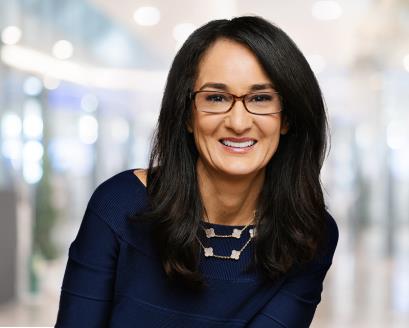
1. Lean into AI — not just as a tool, but as a team member. "Generative AI and predictive analytics aren't future concepts — they're already reshaping how decisions get made and how work gets done. The opportunity now is to responsibly embed AI into daily workflows: Streamlining manual tasks, spotting risk before it materializes and guiding smarter, faster decisions across the value chain. This isn't about replacing people — it's about elevating them. AI, when grounded in clean data and guided by human judgment, will be one of the most powerful drivers of supply chain transformation in the decade ahead."
2. Make data governance a priority — not an afterthought. "Digital transformation only works if the data is trustworthy. And yet, many organizations still struggle with mismatched product data, contract misalignment and fragmented systems. Establishing strong data governance practices — backed by shared standards, centralized stewardship and cross-functional accountability — creates the foundation for automation, AI and better decision-making. Clean data is no longer a backend problem; it's a frontline enabler of efficiency, insight and better outcomes. And it's not just foundational to transformation — it's the lynchpin for AI. Without clean, structured data, even the most advanced AI models can't deliver reliable insights or support confident action."
3. Design for disruption. "Disruption is no longer an outlier — it's the environment in which we operate. From supply shortages to climate-driven events and geopolitical instability, volatility is now a constant. That's why healthcare leaders must shift from reactive risk management to resiliency by design. That means diversifying sourcing, developing clinically informed substitution strategies and creating shared visibility into where constraints are impacting care. It also requires codifying responses into actionable playbooks so that teams can move with speed and clarity, even under pressure. The goal isn't to eliminate disruption, but to build the kind of system that can flex without breaking, because protecting care shouldn't depend on perfect conditions.
4. Build supply chain literacy across the enterprise. "Supply chains can't operate in a silo, not anymore. As the industry grows more interconnected and more dependent on real- time decisions, leaders across finance, clinical and IT must understand how supply chain impacts everything from patient care to financial performance. That means translating supply chain performance into business impact using plain language, shared metrics, and trustworthy data. The more supply chain fluency we build across the organization, the faster we can align and adapt."
5. Prioritize talent that thrives in ambiguity. "The next era of supply chain leadership won't be about who knows the old playbook — it'll be about who can navigate gray areas, adapt quickly and lead with clarity through uncertainty. We need people who are curious, purpose-driven, and comfortable learning as they go. That includes investing in upskilling, leadership development and building cultures that reward problem-solving, not just execution. The world isn't slowing down — and neither is healthcare. Our teams need the mindset and muscle to move with it."
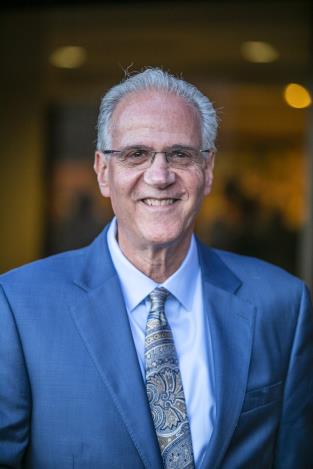
Tom Lubotsky, Bellwether Class of 2022, vice president and Chief Supply Chain Officer, Allina
Health, Bronze Sustaining and Educational Sponsor, slides along a similar wavelength for supply chain to succeed in the next decade. He shares his own five strategies that center on people, technology and process improvement.
1. Investing and development of talent. "There will be the consistent need to determine the new capabilities and the required talent necessary to advance critical work. Cross training as a key tactic is essential if one wants to develop leadership of supply chains for the future. Creating the framework of learning will also be a key course. That is, setting for the internal opportunities to learn about other functions in combination with education including achieving certifications, as well as attending national conferences are just a few of the key components of sound framework for investing in talent for the future. Spending time on exacting the science of important skills and capabilities for carrying out jobs today and in the future will also have to be addressed."
2. Incorporating AI capabilities. "It is obvious to all that understanding the broader use and applications of AI inside supply chain will be necessary. Developing the use cases today to identify best AI applications, trial and refine further will be indispensable effort to optimize these capabilities going forward. By so doing, this will likely have supply chain leaders reexamine the type of workforce they will need for meeting the cost pressures of sustaining a supply chain department centered on the higher value- added work that needs to be accomplished."
3. Non-labor governance. "Organizing and integrating executive, senior and physician leaders into formal governance frameworks will be necessary to set forward the proper policies, procedures and direction of managing a supply chain into 2030. Through this governance, better controls of non-labor costs by bringing spend under management and establishing a culture of value management and disciplined spending can be accomplished. In addition, this governance will instill a culture of stewardship by providing education, guidelines and fostering an environment where everyone understands their role in cost-effective healthcare delivery. Furthermore, centering on the identification and measurement of value for the products and services purchased will be a key element of this governance focus."
4. Strengthening supplier relationships. "Maximizing the mutual value of provider-supplier relationships will help address the multitude of problems, capabilities needed and solutions required to advance a healthcare supply chain to each. Setting forward a context and relationship framework to improve not only the supply chain but overall, the critical goals of a healthcare system can be better accomplished through these formal operating relationship models. Beginning now to invest in the program management required to build out these capabilities is critical."
5. Resiliency: "This essential work will need to be addressed over the next several years. Key to this effort is the engagement in developing standards that both providers and suppliers will have to create and adopt to bring consistency and reduce the redundancy among both as this factor becomes the more dominant in the choice of products. Then national collaborating organization of HIRC — Healthcare Industry Resilience Collaborative — is the pre-eminent non-profit consortium for patient-centric healthcare supply chain resiliency standards and best practices. Their mission is to increase resiliency and transparency in healthcare supply chains through collaboration, standards and best practices for continuity of patient care.

"Critical to this effort will be the use of integrated systems/technologies that link insight on the supply chain disruption and allow providers to be far more agile in avoiding and stabilizing these unexpected interruptions," Lubotsky added. "Dedicated leadership to map out and manage the development of a resiliency program within a provider setting will be essential."
Healthcare supply chain performance improvement and ongoing success in the next decade hinges on having the right mindset, insists Gail Kovacs, Bellwether Class of 2024, and a retired supply chain veteran.
"You always have to stay cognizant that change will be with us as an ever-present companion," she advised. "Keep a contingency planning mentality in mind that addresses pandemics, supply shortages, disruption of supply chain distribution. Ask, what contingency could I be planning for? What could I have done differently in prior events?"
Connections with people and technology matter as well.
"Maintain good relationships with all you interact with," Kovacs continued. "Stay current with issues and technology — not necessarily having expertise in each area but knowing who you can access as a resource when needed. Nurture those relationships in advance. Plan for change, be forward looking, evaluate options to adopt new tactics and strategies that others have successfully implemented. Maintain currency in professional development; engage with successful professional organizations."

Fred Crans, Bellwether Class of 2020, Outreach Ambassador on the BLF Board of Directors, and business development executive, St. Onge Co., Silver Sustaining Sponsor, identifies four possibilities for healthcare supply chain in the next five years.
"You could thrive, survive, be eaten up in a merger or acquisition or fail and close the doors," he predicted. Crans then offered five quick takeaways to implement.
- Make certain to bn the C-level decision-making team.
- Commit to doing aperational assessment on the current state of your supply chain.
- Create a formal SMasterplan.
- Advocate for the u need, recruit for them and hire for them.
- Keep your eyes on

Angie Boliver, president and CEO, Healthcare Supply Chain Association (HSCA), BLF corporate sponsor, emphasizes the need to make effective and efficient use of group purchasing organization relationships, facilitate communications with business partners and customers and implement cybersecurity protections to navigate through this decade.
"Hospitals and supply chain leaders should work closely with their traditional healthcare group purchasing organization (GPO) partners in the coming years to better navigate shifting economic and geopolitical conditions. GPOs have visibility into a broad scope of ongoing challenges and purchasing patterns, offering supply chain leaders critical information to support a resilient supply chain," Boliver said.
"Moreover, it will be essential for hospitals to maintain high standards of communication between all parties involved in the purchasing process," she continued. "Subpar communication can lead to a number of logistical challenges, particularly in times of supply chain uncertainty. Overcoming unpredictability in the supply chain requires a cross-functional approach to purchasing — hospital procurement teams should be in regular contact with clinicians, executives and any other relevant stakeholders so as to understand the full scope of the hospital's needs."
The pervasiveness of the digital landscape poses the newest wrinkle, according to Boliver.
"In an increasingly digital healthcare ecosystem, it will only become more important for hospital leadership to invest in and maintain robust cybersecurity protocols for medical devices and information systems," she noted. "GPOs work to facilitate communication between the suppliers of connected devices and services and the healthcare delivery organizations that use them, making GPOs an excellent resource for hospitals in need of guidance. Hospital leadership should also periodically evaluate how new implementations of emerging technologies, such as artificial intelligence, might help streamline clinician workflows and assist with administrative tasks."
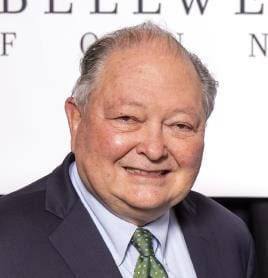
Rand Ballard, Chief Customer Officer, Vizient Inc., BLF Founding and Educational Sustaining Sponsor, infuses a dose of encouragement and actionable intent based on market conditions.
"First, I believe the tumultuous smoke that has occurred through the new regime is mostly smoke, and supply chain in U.S. hospitals is very resilient and will be able to quickly source domestic for the same quality or lower price," Ballard assured.
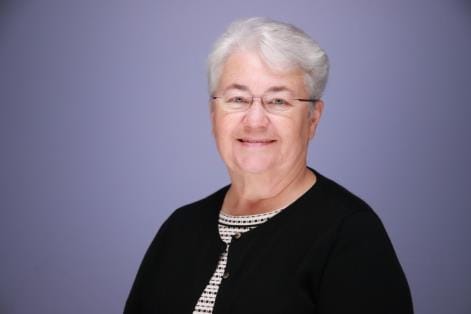
"We need to make sure if the 'Made in the USA' philosophy changes, support for 'Made in USA' is there so it does not go obsolete and it is not a roller coaster," he continued. "We do recognize that some pharmaceuticals and medical devices may take six-to-nine months to ramp up, but the vast majority of products can be ramped up very quickly."
Bellwether League Foundation Board Chairman Barbara Strain, Bellwether Class of 2021, calls for healthcare supply chain executives, leaders, managers and professionals to get involved to make a difference.
"Be a part of the solution," Strain recommended. "Participate in professional organizations of all types — not just your specialty. Sit on national review committees/boards for regulatory and guideline producing agencies, create 'voice-of-the-customer' (VOC) groups for regulators and the seven industry groups [represented by BLF — providers, distributors, manufacturers, GPOs, consultants, academic institutions and media]. Be involved in your communities/regions to balance the patient care experience. Work on payer reform."

Healthcare supply chain must embrace standardization, industry and professional partnerships and transition to value from savings to make a difference, according to Tom Redding, executive vice president and healthcare practice leader, St. Onge Co., Silver Sustaining Sponsor.
"Invest in standardizing systems and technology, including the adoption of middleware platforms to unify disparate data sources," Redding recommended. "Preparing for future disruptions requires a clear understanding of how operations are interconnected and function on a day-to-day basis."
Everyone needs to work together, too.
"Strengthen partnerships across suppliers, health systems and industry collaborators to drive greater aggregation, scale and shared resources," he continued. "One of the major challenges exposed during past disruptions was the fragmented response — many health systems had to navigate crises independently. Those with stronger networks and more integrated systems fared significantly better."
Finally, it's time to migrate away from obsessing over transactions.
"Shift the focus from cost savings to value creation," Redding emphasized. "Future success in the healthcare supply chain will rely on a strategic, forward-looking mindset. This approach emphasizes long-term impact, proactive planning and the overall value delivered to the organization, rather than short-term, transactional cost reductions."
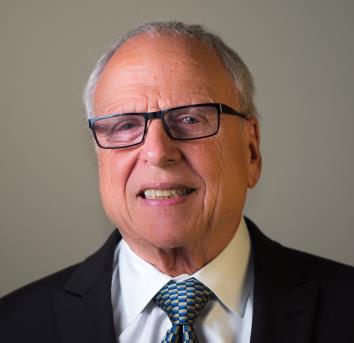
To adequately prep for the 2030s, healthcare supply chain teams must rethink and recharge their priorities, according to Eugene Schneller, Ph.D., Bellwether Class of 2024, professor, Supply Chain Management, W.P. Carey School of Business, Arizona State University, and renowned lecturer and industry observer.
Start with investing in technology — especially around automation and AI, Schneller suggests. "Determine where to make the investments/bets and when (early versus late adopter) regarding automation of supply chain functions. How to manage the transition? When to pull the trigger on change?"
Then concentrate on distribution. "Clarify the balance between just-in-time and just-in-case," he indicated. "COVID and tariffs made it clear that investment in resilience is critical — but everyday cost pressures and bottom-line management work against such investments.
Emphasize supply chain's organizational importance. "Position Supply Chain as a strategic competency within the organization," Schneller urged. "Work with finance to achieve realignment with payors. Rethink the role of Supply Chain in reimbursement/contracting — especially around bundled payments and [accountable care organization] reimbursement. As the second cost following labor there needs to be a much stronger understanding about what constitutes fair reimbursement. Supply Chain needs continual support to enhance the bottom line."
Finally, a philosophical mindset change must be explored to "negotiate the role of intermediaries as 'asset managers' challenged in a world susceptible to significant disruptions," Schneller said. "Their business models have not proven to fully advance the ability support the acquisition and management of hospital assets nor to assure their own resilience. What's needed is the ability to engage intermediaries as partners with clearly defined performance regarding disruption management."